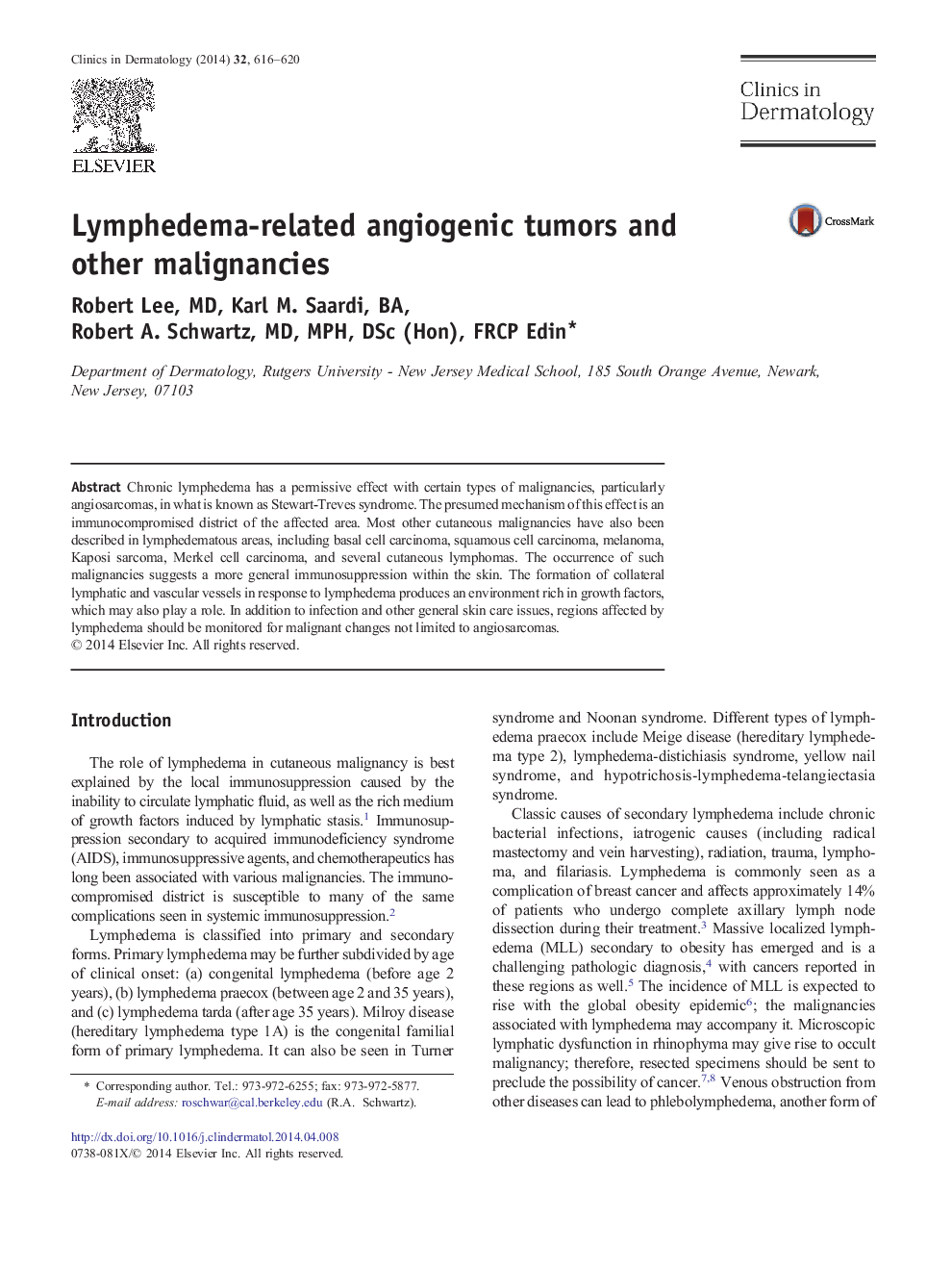| Article ID | Journal | Published Year | Pages | File Type |
|---|---|---|---|---|
| 3194139 | Clinics in Dermatology | 2014 | 5 Pages |
Chronic lymphedema has a permissive effect with certain types of malignancies, particularly angiosarcomas, in what is known as Stewart-Treves syndrome. The presumed mechanism of this effect is an immunocompromised district of the affected area. Most other cutaneous malignancies have also been described in lymphedematous areas, including basal cell carcinoma, squamous cell carcinoma, melanoma, Kaposi sarcoma, Merkel cell carcinoma, and several cutaneous lymphomas. The occurrence of such malignancies suggests a more general immunosuppression within the skin. The formation of collateral lymphatic and vascular vessels in response to lymphedema produces an environment rich in growth factors, which may also play a role. In addition to infection and other general skin care issues, regions affected by lymphedema should be monitored for malignant changes not limited to angiosarcomas.
